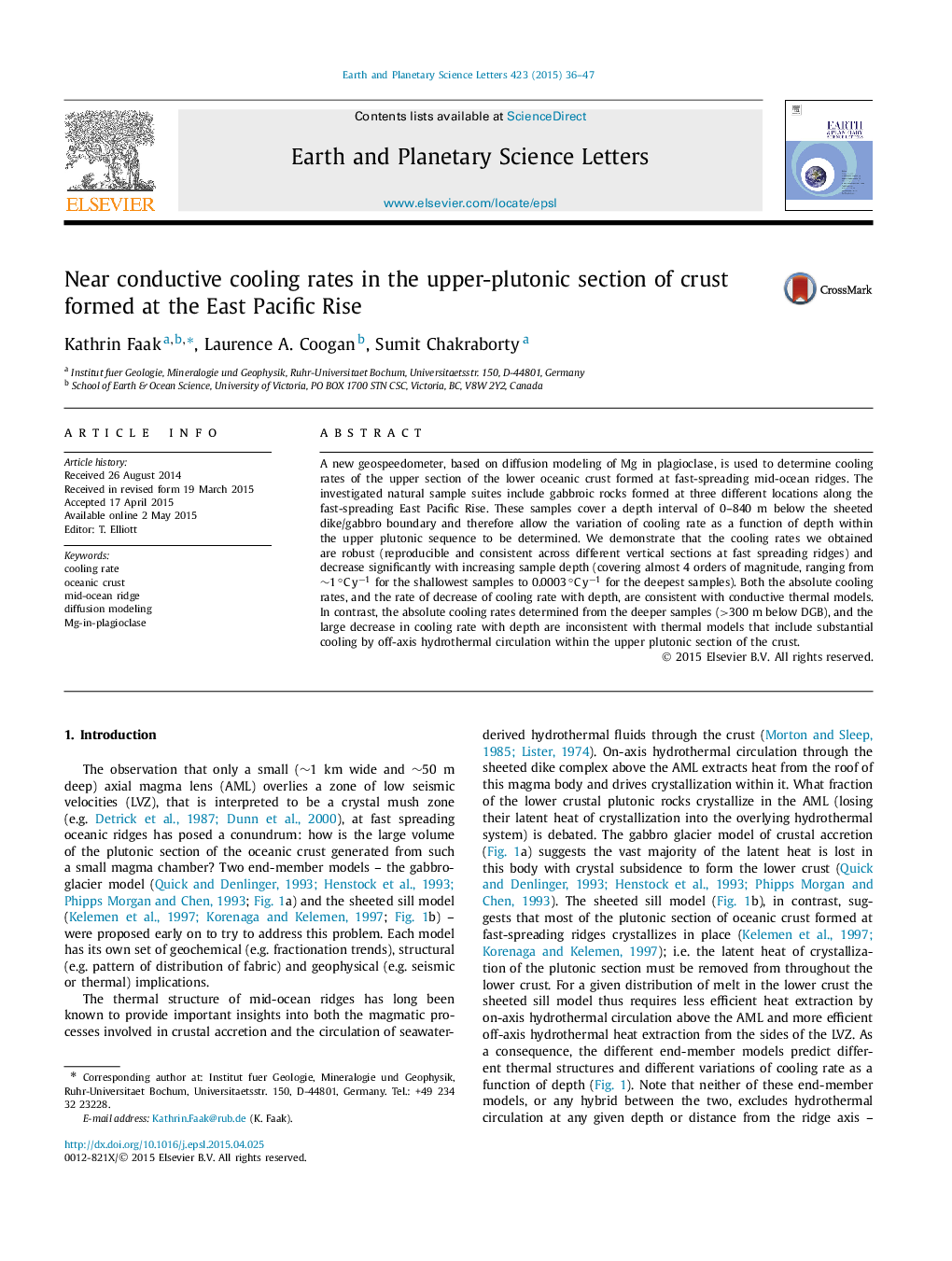| کد مقاله | کد نشریه | سال انتشار | مقاله انگلیسی | نسخه تمام متن |
|---|---|---|---|---|
| 4676965 | 1634733 | 2015 | 12 صفحه PDF | دانلود رایگان |
• We use diffusion modeling of Mg concentration gradients in plagioclase to determine cooling rates of oceanic gabbros.
• Cooling rates were obtained from natural samples of the lower oceanic crust as a function of depth.
• Obtained cooling rates decrease significantly with increasing sample depth.
• Our data is most consistent with conductive thermal models.
• Our data is inconsistent with models that incorporate substantial cooling by off-axis hydrothermal circulation.
A new geospeedometer, based on diffusion modeling of Mg in plagioclase, is used to determine cooling rates of the upper section of the lower oceanic crust formed at fast-spreading mid-ocean ridges. The investigated natural sample suites include gabbroic rocks formed at three different locations along the fast-spreading East Pacific Rise. These samples cover a depth interval of 0–840 m below the sheeted dike/gabbro boundary and therefore allow the variation of cooling rate as a function of depth within the upper plutonic sequence to be determined. We demonstrate that the cooling rates we obtained are robust (reproducible and consistent across different vertical sections at fast spreading ridges) and decrease significantly with increasing sample depth (covering almost 4 orders of magnitude, ranging from ∼1 °C y−1 for the shallowest samples to 0.0003 °C y−1 for the deepest samples). Both the absolute cooling rates, and the rate of decrease of cooling rate with depth, are consistent with conductive thermal models. In contrast, the absolute cooling rates determined from the deeper samples (>300 m below DGB), and the large decrease in cooling rate with depth are inconsistent with thermal models that include substantial cooling by off-axis hydrothermal circulation within the upper plutonic section of the crust.
Journal: Earth and Planetary Science Letters - Volume 423, 1 August 2015, Pages 36–47
